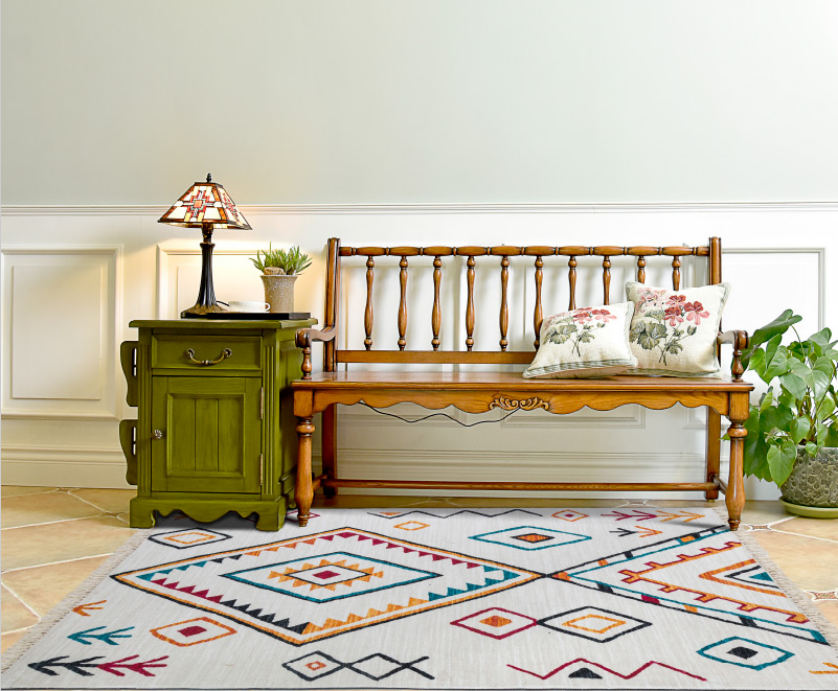Choosing the right material for an area rug is crucial as it not only affects the rug's appearance but also its durability, maintenance requirements, and overall performance in the desired space. With a wide variety of materials available, it's important to consider several factors when selecting an area rug material. Here are some key considerations to help you make an informed decision:

Consider the level of foot traffic in the area where the rug will be placed. If it's a high-traffic area like a living room or hallway, you'll want a rug material that can withstand heavy use. Wool is a durable and resilient choice, known for its ability to bounce back after being compressed. Other durable options include nylon, polypropylene, and sisal.
Different rug materials have varying maintenance requirements. Consider how much time and effort you're willing to invest in cleaning and upkeep. Some materials, like wool and synthetic fibers, are relatively easy to clean and resist stains. Natural fiber rugs like jute or sisal may require more delicate cleaning methods and may be more prone to stains.
Think about the level of comfort you desire from your area rug. If you're looking for a soft and plush feel underfoot, materials like wool or shaggy synthetic fibers can provide a cozy experience. Natural fibers like jute or sisal tend to have a coarser texture and may be better suited for areas where comfort is less of a priority.
If you or anyone in your household has allergies or sensitivities, consider rug materials that are hypoallergenic or resistant to allergens. Wool, for example, is naturally hypoallergenic and resistant to dust mites. Synthetic materials like nylon or polyester are also less likely to trigger allergies compared to natural fibers.
The material of the area rug can significantly impact its visual appeal and how well it complements the overall style of your space. Each material has its own unique look and texture. Wool rugs offer a classic and timeless appearance, while synthetic fibers can mimic the look of natural materials but with added durability and stain resistance. Natural fiber rugs like jute or sisal provide a more organic and rustic feel.
Consider your budget when selecting an area rug material. Some materials, like wool or silk, tend to be more expensive, while synthetic fibers are generally more budget-friendly. Natural fiber rugs can also vary in price depending on the specific material and quality.
Think about the specific area and purpose of the rug. For example, if you're looking for a rug for an outdoor patio or a damp area like a bathroom, you'll want a material that is water-resistant and can withstand moisture. In such cases, synthetic materials or certain natural fibers like bamboo may be suitable.
Ultimately, the best material for your area rug depends on your specific needs, preferences, and the environment where the rug will be placed. It's advisable to consider a combination of factors such as durability, maintenance, comfort, allergies, style, budget, and the rug's intended location to make an informed decision. Additionally, it's always helpful to consult with rug experts or retailers who can provide further guidance based on their knowledge and experience.